9/17/09 A key argument for buying newer platforms compared to older ones is the savings built into a new platform over the operational and logistics costs of the older platform. In the commercial airplane business, both Boeing and Airbus design and build their newest platforms with significant enhancements in sustainability in mind. According to one senior official at Airbus, “We have a design committee which reviews recommendations with regard to sustainment and logistics support from commercial customers to determine the most desirable enhancements we might then build into the new aircraft (the A350). We then determine priorities and feasibility’s with regard to the design approach and manufacturing process to shape the new build aircraft.”
This is true as well for military aircraft. The F-35 has been designed in part in ways to mimic a commercial manufacturing process and the development, design and manufacturing approach for the F-35 have been built around enhanced sustainability for the new aircraft. Indeed, the F-35 team has focused on ways to ensure that the build and sustainment process have has much inherent overlap as possible.
In an August 2009 interview, with Bob Fiorentini, former head of F-35 production, and now VP for Global Strategic Sourcing, a number of key aspects of the approach to design, development and manufacturing for sustainability were identified and discussed in an interview conducted in late August 2009.
According to Fiorentini, the focus of the program from the beginning of the design of the aircraft has been upon affordability, both in terms of initial cost and sustainment. The designs of the aircraft and notably the tooling for both production and sustainment have been built with a keen focus on logistics considerations. Fiorentini underscored that “historically, legacy aircraft have been built and then sustained in the field. These processes have operated virtually independently of one another. And learning which has occurred in the process of building the aircraft has not been passed on directly for the post-build or sustainment process. In this program, the relationship has been changed to allow significant interaction between production and sustainment approaches.”
A core element of the approach has been upon designing and building tools for both manufacturing and sustainment. Fiorentini underscored that “we are designing and building dual use tools versus build and then sustainment tools.”
In other words, many of the tools used in the build of the aircraft will be deployed to the filed. This leads to cost containment for the tool building companies who get a much longer run because they are producing for both production and sustainment processes. This also leads according to Fiorentini “to much earlier maturity for tools used in sustainment than has been the case in legacy programs.”
Fiorentini provided several examples of the build for sustainment approach for the F-35 program.
The first example is the integrated power plate or IPP, which is used to support the integrated suite of applications, which provide electrical power, temperature control and engine start systems. “On legacy aircraft all of these systems are separate and require separate maintenance efforts. On the F-35, the IPP uses the same tools and maintenance process.” The result is a significant reduction of time needed to maintain the aircraft. The tools used to build the aircraft and to sustain it are identical and are seen in the accompanying photos.
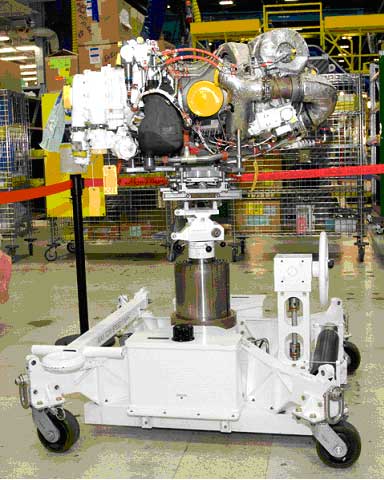
A second example is what the F-35 program team calls the EHAS or the electrohysdrostatic actuation system. The EHAS is a “revolutionary step in the control of aircraft surfaces. Hydraulic systems for the F35 are not centralized. EHAS allows each unit on the surface to control itself.” Fiorentini adds that this “significantly reduces the risk of catastrophic failure. And the EHAS systems reduces the amount of maintenance for the aircraft by eliminating a number of components in the airframe such as hydraulic tubing, hose lines goring through the airframe.”
The EHAS reduces the overall weight of the aircraft and by simplifying the aircraft simplifies the maintenance tasks as well. And as with other systems in the F-35, the EHAS tools for the build of the aircraft is the same as the tools, which will be used to sustain the aircraft. The EHAS tooling is seen in the accompanying photo.
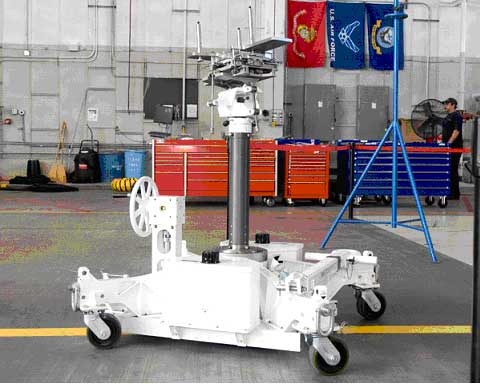
Another example of how design change shapes sustainment capabilities is the operation of the F-35 canopy. The canopy tilts from the back, which allows the ejection seat to be removed and serviced. In legacy aircraft, the canopy has to be removed to take out the ejection seat. By designing the canopy this way, the time for servicing the ejection seat is significantly reduced. And the tools used for seat alignment are the same for both production and maintenance. The ejection seat tool is seen in the accompanying photos.
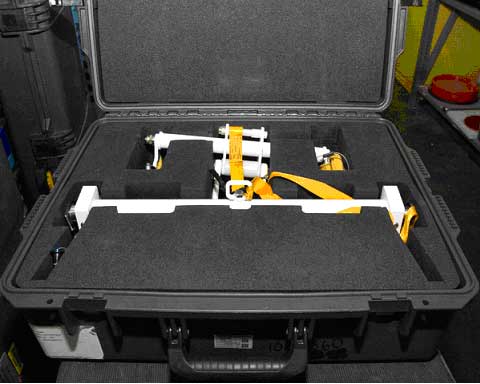
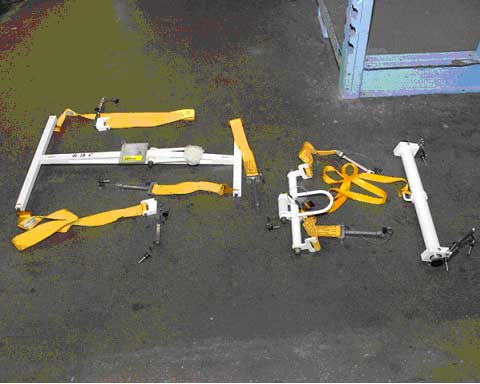
A fourth example is how the engine trailer is used for the F-35. The engine trailer looks like a modified truck with four large wheels on it. The engine is installed on the aircraft or pulled off by the engine trailer. This allows maintenance to be facilitated by use of the fitted trailer “truck.” And the engine trailer used in production is the same as the one being used in test and then run stations. Fiorentini noted that “not only is training going on as the engine trailers are used in the production process but suggestions for both line workers and maintainers (who are on the lines as well) are inputing suggestions. This facilitates and early maintenance learning curve prior to deployment.” The engine trailer is seen in the accompanying photo.
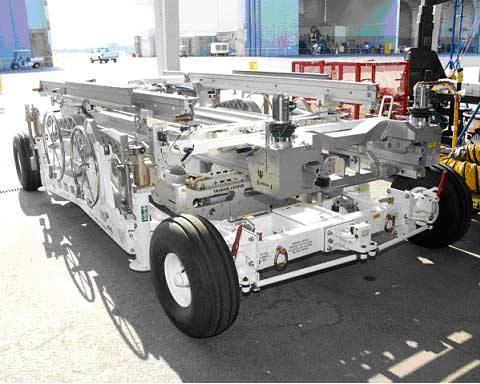
There are additional examples throughout but the point is clear: in the design and production of the F-35 future sustainment has been built in wherever possible. And design features like the reduction of panels, which need to be removed to do repairs, reduce downtime. “Many of the components of the airplane which in legacy aircraft required panel removal are now built into the weapons and landing gear bays where no panel disassembly is required for most commonly serviced parts of the aircraft.”
The maintainers for the F-35 use a ruggedized laptop to do initial systems checks. In legacy aircraft, very specialized equipment proprietary to the manufacturer has to be used. And again, the same procedures used in the factory are those used in the field for final test out for flight.
And Fiorentini emphasized that the build to maintain has enhanced significantly the reliability on the flight line. “We use one data base throughout the design and maintenance process. This guarantees consistency and will provide important metrics for sustainment. And the use of the same design tools to design for production and sustainment tooling ensures compatibility throughout.”
Interview conducted August 2009 by Robbin Laird.
———-
***Posted September 17th, 2009

